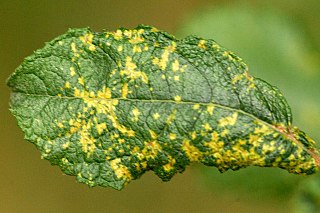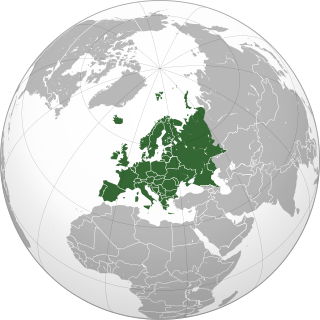
Salix alba, the white willow, is a species of willow native to Europe and western and central Asia. The name derives from the white tone to the undersides of the leaves.

Salix caprea is a common species of willow native to Europe and western and central Asia.
Salix babylonica is a species of willow native to dry areas of northern China, but cultivated for millennia elsewhere in Asia, being traded along the Silk Road to southwest Asia and Europe.

The cream-bordered green pea is a moth of the family Nolidae. It is found in most of Europe eastwards to the Urals and Western Siberia.

Rabdophaga rosaria is a gall midge which forms Camellia galls or terminal rosette gall on willow species. It was first described by Hermann Loew in 1850.

Stigmella salicis is a moth of the Nepticulidae family which is found in Europe. It was first described by the English entomologist, Henry Stainton in 1854. The type locality is from England.

Ectoedemia intimella is a moth of the Nepticulidae family which is found in Europe. It flies in June and July and the larva mine the leaves of willows from July to November.

Agonopterix conterminella is a moth of the Depressariidae family which is found in Asia, Europe and North America. It was first described by Philipp Christoph Zeller in 1839 from a specimen found in Augsburg, Germany. The larva feed on the terminal shoots of willows.

Psallus haematodes is a true bug. The species is found in the Palearctic.It occurs almost everywhere in Europe, but only occurs in the North of the Mediterranean.East the range extends to Siberia and to the Caspian region. It is introduced in North America. It is found in open, sunny, but also shady places on wetland edges, rivers and in bogs, and also in dry habitats.
Aculus gemmarum is a species of mite which causes galls on the buds of willows. It was first described by Alfred Nalepa in 1892.
Rabdophaga iteobia is a gall midge which forms galls on the buds of willow species.
Rabdophaga saliciperda is a species of gall midges which forms galls on willows. It was first described by Léon Jean Marie Dufour in 1841.
Euura auritae is a species of sawfly belonging to the family Tenthredinidae. The larvae forms galls on willows. It was first described by Jens-Peter Kopelke in 2000. E. auritae is one of a number of closely related species which is known as the Euura atra subgroup.
Euura weiffenbachiella is a species of sawfly belonging to the family Tenthredinidae. The larvae forms galls on creeping willows. E. weiffenbachiella is one of a number of closely related species which is known as the Euura atra subgroup.
Euura salicispurpureae is a species of sawfly belonging to the family Tenthredinidae. It was first described by Jens-Peter Kopelke in 2014. The larvae feed within galls on willows. E. salicispurpureae is one of a number of closely related species known as the Euura atra subgroup.
Euura myrtilloides is a species of sawfly belonging to the family Tenthredinidae and the larvae forms galls on swamp willow. It was first described by Jens-Peter Kopelke in 1996. E. myrtilloides is one of a number of closely related species which is known as the Euura atra subgroup.

Melampsora caprearum is a fungal pathogen which causes galls on willows. Also known as a rust fungus, it was first described by Felix von Thümen in 1879.

Rabdophaga nervorum is a gall midge which forms galls on the leaves of sallows.
Aceria iteina is a species of mite which causes galls on the leaves of sallows and their hybrids. It was first described by Alfred Nalepa in 1925.














